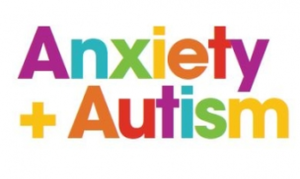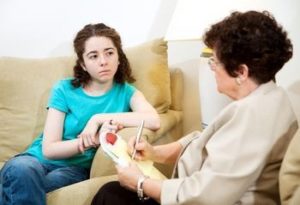More often than not, a diagnosis of autism will be followed by a second diagnosis. The incidence of comorbid conditions with autism is 70%, according to one study following autistic children ages 10 to 14 (Smirnoff et al, 2008). The study found that the most common comorbidity was anxiety, which affected thirty percent of children with more than one diagnosis.
 Many symptoms of anxiety naturally occur as part of autistic spectrum disorder (ASD), especially on the high-functioning end of the spectrum and among autistic adolescents. For example, repetitive behaviors that an autistic person might exhibit, such as fidgeting, may appear to be symptoms of obsessive compulsive disorder. This overlap of symptoms makes diagnosis difficult. Much research related to measuring anxiety among individuals with ASD has been inconclusive, like this 2005 study.
Many symptoms of anxiety naturally occur as part of autistic spectrum disorder (ASD), especially on the high-functioning end of the spectrum and among autistic adolescents. For example, repetitive behaviors that an autistic person might exhibit, such as fidgeting, may appear to be symptoms of obsessive compulsive disorder. This overlap of symptoms makes diagnosis difficult. Much research related to measuring anxiety among individuals with ASD has been inconclusive, like this 2005 study.
Youth further compounds the complexity of anxiety diagnosis: autistic children and teens have an especially difficult time self-reporting symptoms, many of which are not apparent to others. Additionally, adolescence is a period of rapid social changes, which young people with autism have an even harder time navigating than their neurotypical peers. These are all important factors to consider when diagnosing a teenager.
After a diagnosis is made, cognitive-behavioral therapy (CBT) is the most common course of treatment. It typically involves addressing irrational thinking and exposure therapy. Although widely regarded as effective, the verbal basis and frequently theoretical nature of CBT can be harder for autistic individuals, who may have impaired metacognitive abilities. Still, studies have shown improvement in functioning of autistic individuals after undergoing CBT.

Outside of CBT, a major limitation of treatment for anxiety is the lack of knowledge about pharmacotherapy for autistic individuals. While a neurotypical adolescent’s anxiety would likely be treated with a combination of talk therapy and medication, little research exists surrounding the effects of drugs such as SSRIs (selective serotonin reuptake inhibitors) on autistic individuals. Until further studies are conducted, pharmacotherapy is not a viable course of treatment for anxiety in autistic teens.
One critical aspect of treating anxiety and autism is parent involvement. Due to parents’ natural involvement in their child’s routines, education on anxiety management is highly beneficial to them as well. One group of researchers has developed a “Face Your Fears” intervention, in which they recommend that parents take steps such as modeling courage and rewarding their child for engaging in activities that he/she/they found frightening.
Sources:
https://www.iidc.indiana.edu/pages/anxiety-and-autism-spectrum-disorders
http://pediatrics.aappublications.org/content/137/Supplement_2/S115
I found your blog post very interesting, especially your points about how typical ASD symptoms could be misdiagnosed for obsessive-compulsive disorder or even typical signs of anxiety. How do you think the medical field will approach this problem, what do you think the solution is for finding the actual source of specific symptoms in an individual with comorbid disorders?